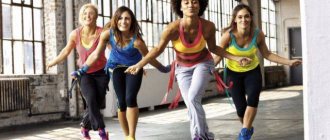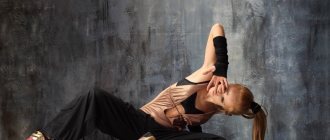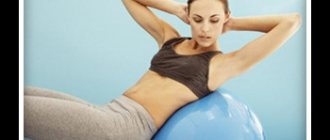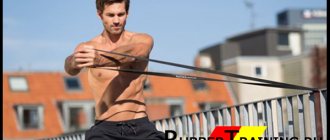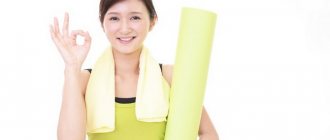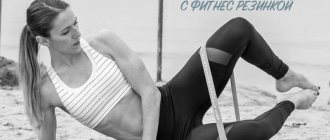Do you want to practice Qigong for general health or healing from illnesses, but don’t know how to start correctly and not make mistakes? Don't worry, there's nothing complicated about it. You will succeed.
Quick jump to article sections:
- Qigong always works.
- Do you need an instructor to practice Qigong?
- Where to start practicing Qigong.
- There are two main conditions for proper Qigong practice.
- Self-study Qigong - Questions and Answers.
The question often arises: how to start practicing Qigong on your own? And in general, is it possible to do this on your own or do you need an instructor?
After all, the now popular yoga, for example, is full of examples when people practiced themselves or visited so-called “yoga studios” in fitness centers and instead of improving their health they ended up with even more problems.
And with Qigong there is even less understanding of how and what to do. In appearance everything seems simple, the movements are often primitive. Does this really work? What's the catch here?
What age is it suitable for?
Chinese qigong gymnastics is suitable for people of any gender and age. Let's take a closer look at the age groups.
Middle aged people
It is recommended for people over 30 years of age to practice qigong. According to Chinese philosophy, the qi energy that a person is endowed with from birth gradually dries up and is wasted, starting at exactly this age.
Chinese gymnastics exercises provide energy and help replenish its reserves.
In addition, a modern city dweller is a person who is busy with work, experiences regular stress at work and dreams of rest and relaxation.
Qigong not only relaxes the body, but also the mind. During class, you need to get rid of thoughts and concentrate on movements and breathing. Thanks to this, people get rid of insomnia and cope better with overwork.
Here are a number of advantages of Chinese gymnastics:
- suitable equally for men and women;
- many sets of exercises are suitable for overweight people, as they do not require much flexibility;
- for healthy people this is a great way to keep fit;
- for those suffering from a number of diseases, this is an opportunity to improve the body’s health and, if not completely healed, then at least improve their well-being;
- and finally, in the endless bustle, qigong teaches us to stop and look into ourselves, into our inner world, in order to find lost harmony.
The most effective way to master qigong is to trust the Teacher. Friends, I want to recommend you an experienced mentor named Kos. He studied Chinese practices for many years, and now teaches them to the delight of his students. Kos knows how to explain things simply and clearly. And the proposed exercises can be performed by anyone without physical training. I would like to invite you to take 4 short free lessons, during which Kos will teach you the basics of qigong. You will master energizing and relaxation practices. I'm sure you will enjoy these simple exercises.
Qigong gymnastics for the elderly
Qigong classes are very popular among older people. Thus, in China, numerous Chinese pensioners work out in squares and open-air parks. They understand that movement is life. And they take care of their well-being until old age.
In our country, Chinese gymnastics is also gaining popularity among older people.
These classes are unique in that they are suitable for people of all ages and do not require physical training. In addition, there are practically no contraindications for performing exercises.
Qigong allows older people to replenish missing energy and ensure its free circulation throughout the body. As a result, the practitioner seems to gain a second youth.
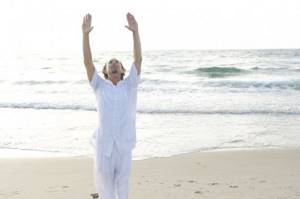
Performing a health-improving set of qigong exercises is useful for various diseases:
- cardiovascular;
- hypertension and pressure surges;
- peptic ulcer;
- depression and neuroses;
- problems with the spine;
- diseases of the genitourinary system.
IMPORTANT! Before starting practice if you have a medical condition, you should consult your doctor.
Various exercises tidy up joints, speed up metabolic processes, increase immunity, improve blood circulation, and help relieve anxiety and stress.
Video lessons
You should start classes with an experienced teacher. Of course, the ideal option would be to go to a Chinese gymnastics center and sign up for training. But if you don’t have this opportunity, follow the video lessons. Here are the main advantages of this type of activity:
- free lessons for beginners;
- you can choose an experienced and clearly explaining teacher;
- if you didn’t have time to do the exercise, you can pause it and listen again;
- practice at any convenient time.
Where can I take such lessons? I want to recommend you an experienced mentor named Kos. He studied Chinese practices for many years. Kos knows how to explain things simply and clearly. And the proposed exercises can be performed by anyone without physical training .
You will take 4 short free lessons during which Kos will teach you the basics of qigong. You can sign up HERE.
Children and youth
Although qigong is recommended for people over 30 years of age, it can also be beneficial for younger people. However, these practices are not sufficient for a young body. They should be combined with sports or other activities.
Qigong exercises are good during periods of overload. They are shown to schoolchildren and students while preparing for exams.
Thanks to the practices, young people gain self-confidence and overcome stress with ease. The ability to perceive and remember information increases.
What Science Says
In 2011, Korean scientists analyzed Qigong for healthcare: an overview of systematic reviews of scientific studies on the health benefits of qigong. Five reviews confirmed the effectiveness of the practice, and the remaining five had no specific conclusion. In addition, scientists noted that the bulk of the reviews were not credible due to the low quality of the studies.
Other reviews also highlight research weaknesses:
- The Effects of Qigong on Anxiety, Depression, and Psychological Well-Being: A Systematic Review and Meta-Analysis.
- Qigong for the treatment of hypertension Qigong for Hypertension.
- Managing stress and anxiety through qigong exercise in healthy adults: a systematic review and meta-analysis of randomized controlled trials.
In all reviews, the seven-item assessment of The Cochrane Collaboration's tool for assessing risk of bias in randomized trials Cochrane showed that the risk of error and bias in trials is quite high.
The latest systematic review, A Systematic Review and Meta-Analysis Baduanjin Qigong for Health Benefits: Randomized Controlled Trials, conducted by Chinese scientists in March 2017, showed that the “Ba Duan Jing” (“8 pieces of brocade”) set of exercises improves sleep quality, feeling balance and flexibility of the body, normalizes blood pressure and pulse at rest.
The review analyzed 19 randomized controlled trials, 13 of which had high reliability scores on the PEDro PEDro scale, and six had moderate to low reliability scores.
Thus, there is no ironclad evidence of the health benefits of qigong, but many studies confirm the positive effects of this practice.
Class Rules
When performing exercises of any complex, follow simple rules:
- Perform the exercises of the complex strictly in the given order.
- Your back must be kept straight.
- Control your breathing. There is no need to breathe sharply or abruptly. Do not take very deep breaths unless instructed to do so.
- You need to practice in special clothes. You can buy a qigong suit at a specialty store. Or simply choose loose clothing made from natural materials.
- Best practice is outdoors. But if this is not possible, practice indoors. Don't forget to ventilate the room well.
- Do not take a bath or shower for an hour before practice.
- You can eat food only an hour after gymnastics.
Mechanism of weight loss

How does qigong breathing exercises work? It really triggers vital processes that slowly but surely lead to excess weight loss:
- beneficial effects on the nervous system: reducing stress hormones eliminates compulsive overeating syndrome;
- a charge of vivacity and energy;
- intense calorie burning;
- appetite control;
- normalization of lymph flow, due to which waste and toxins are removed;
- enrichment with oxygen, which is known as a powerful antioxidant and fat burner;
- strengthening muscles, especially the abdominal region, thanks to the technique of diaphragmatic breathing, which turns out to be very effective for losing weight in the abdomen, sides and waist;
- improved digestion.
All this can be experienced if you regularly perform qigong breathing exercises, which are quite simple and accessible even to the elderly. However, few people know that this eastern practice is much broader than ordinary gymnastics. And if you understand it thoroughly, studying the very basics, you can discover a whole system that can ultimately speed up weight loss significantly.
To achieve any goal, according to qigong, you need to go through the following stages:
- dynamic - daily exercises (jianfei and taijiquan);
- static - control of one’s own emotions, harmony of soul and body;
- meditative - focusing on certain tasks, including breathing patterns;
- the use of external means: taking diuretic herbs, Chinese acupressure, acupuncture and even close communication with animals and nature.
If you master all 4 stages and make them part of your life, the problem of excess weight will go away forever.
Types of qigong
It is worth noting that the word qigong today is commonly understood as a health-improving set of exercises. However, this concept is much broader. I propose to consider what types of Chinese gymnastics exist.
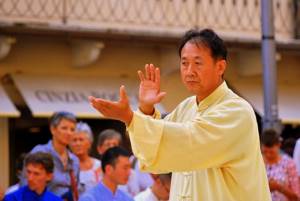
Traditional Qigong of religious schools
This is where the teaching of qigong takes its roots. There are types of qigong that are practiced by representatives of religious movements in China.
- Confucian - its goal is to cultivate moral qualities in a person through physical exercise and gain the skill to control one’s emotions and mental reactions.
- Taoist - practiced to preserve health and longevity. Adherents of Taoism also believe in immortality and strive for it through gymnastics.
- Buddhist - here the goal involves improving consciousness, increasing awareness and ultimately reaching nirvana.
Medical and wellness
Medical qigong is used to get rid of diseases. It is often prescribed by doctors of traditional Chinese medicine to their patients. Depending on the nature of the disease, special sets of exercises are selected.
However, health qigong is considered a more common direction. It helps prevent the occurrence of a number of diseases. It even helps cure some diseases.
Many diseases appear due to stress. If you adjust your body correctly, a person will be in a state of balance when all his muscles are relaxed and his bones are in their places.
For example, people suffering from chronic bronchitis and often catching colds while practicing qigong:
- strengthen the immune system;
- get rid of cough and shortness of breath;
- they get colds less often;
- During thoracic and abdominal breathing, all internal organs of the abdominal cavity and chest are massaged.
Health qigong is very popular in its homeland, China. About 1.7 million people are engaged in it. There are 20 thousand training centers open across the country. Qigong is popularized in schools and among university students. There are even competitions held.
Since 2006, health qigong has been promoted abroad. It is actively distributed in more than 40 countries around the world.
The Chinese are proud of their achievements in the field of healing, in particular qigong, whose history goes back 5 thousand years.
Hard (combat)
Used in martial arts. Its main task is to make the body physically strong and impenetrable. Exercises are classified as the most difficult.
Following this path requires great patience and trust in the wisdom contained within your own body. It's so easy to give up after a couple of failures. It is much more difficult to practice for decades and achieve real results.
Thanks to such activities, all body systems are turned on at full capacity. This ensures the mobilization of physical and mental capabilities at the right moment during the fight with the enemy.
Hard Qigong involves breaking boards or bricks with your hand. The practitioner is able to remain unharmed after receiving strong blows or after contact with the cutting part of a weapon.
There are several systems of hard qigong, here are the most common:
- Iron shirt;
- Diamond Finger Qigong;
- Glass bell;
- Eight Great Diamond Exercises;
- Shaolin Qigong;
- Diamond Arhat.

Iron shirt
The “iron shirt” system makes the body impenetrable to blows with a stick, fist, or other objects. Invisible armor is created on the body, it is pumped with energy. The rapid movement of qi energy to the point where the blow is struck is trained. "Iron Shirt" prevents the destructive effects of an enemy strike.
Soft Qigong
This is the widest type of qigong, including a variety of practices. This includes all restorative, medical and health-improving sets of exercises. As well as meditation exercises. Highlight:
- Static qigong is an exercise that does not involve external movements. What then should be done? Practices involve holding certain poses, controlling breathing and consciousness.
- Dynamic – consists of gymnastic exercises combined with internal concentration.
- Static-dynamic - combines the first and second types.
Stages of development
Complete mastery and development of one qigong complex takes years and sometimes decades. Qigong practice usually includes 4 stages:
- Mastering the exercises. Each movement must be performed correctly in accordance with the recommendations. If breathing control is assumed, then this is also emphasized. Completing the first stage takes about 4 intensive lessons.
- After a few weeks, the practitioner notices an improvement in the condition of the body and the functioning of its systems. Your sleep becomes stronger and your mood improves. The psyche is stabilized.
- At the third stage, when the qigong complex has been predominantly studied and training has become regular, the condition may worsen. Diseases appear that seem to have gone away long ago: for example, rhinitis, tonsillitis, gastritis. Possibly headaches. Chinese masters warn that this is a natural state that indicates the cleansing of the body from illness. At this stage you cannot stop training.
- Finally, the practice of qigong turns from ordinary gymnastics into something more. It becomes a way to discover inner harmony and gain unity with the world.
The most effective way to master qigong is to trust the Teacher. Friends, I want to recommend you an experienced mentor named Kos. He studied Chinese practices for many years, and now teaches them to the delight of his students. Kos knows how to explain things simply and clearly. And the proposed exercises can be performed by anyone without physical training. I would like to invite you to take 4 short free lessons, during which Kos will teach you the basics of qigong. You will master energizing and relaxation practices. I'm sure you will enjoy these simple exercises.
Self-healing complex.
No. 1. Shaolin pillar.
This exercise will improve your posture and strengthen your legs and kidney area, and will also have a positive effect on your lower back muscles. Starting position: Squat down, thighs parallel to the floor. The feet are 80-90 cm apart, parallel. The knees are bent and the center of gravity is between the feet. The neck is straightened, shoulders are lowered, arms are in front of the chest, elbows are bent. Palms down, thumbs perpendicular to index fingers, middle fingers opposite each other. We look at the middle fingers. 1 - move your arms back, inhale. 2 - ip, - exhale. Each part of the exercise lasts at least 3-5 minutes.
No. 2. The tough guy crouches and gets up.
Exercise will strengthen muscles, bones, lower back, kidneys, and increase endurance. I.p. - feet shoulder-width apart, squat, clench your hands, bend your elbows. 1 - rise up, hands on knees. 2 - i.p. Attention is focused on the palms, gradually descending to the feet. Breathing is calm. Repeat from 9 to 18 times. It is used to treat impotence, digestive disorders, arthritis and kidney diseases, as well as emphysema.
No. 3. Dantian pats.
Exercise improves stomach function, tones the kidneys and lower back. Recommended for poor appetite, digestive problems, enuresis, impotence. I.p. - Shaolin pillar pose. 1- arms above your head, palms up. 2 - slowly lower your hands to your stomach. Mentally imagine how chi energy flows from the sky through your head throughout your body.
No. 4. Strengthening the lower back.
.
Exercise will help the flow of vital energy and blood to the back area. The muscles in this area will be strengthened, kidney function will improve, and muscle condition will be normalized. I.p. - Shaolin pillar pose. 1 - Raise your arms from your stomach to your chest to armpit level. 2 - Place your palms on the kidney area. Mentally imagine how your palms collect chi energy and direct it to your lower back. Repeat up to 18 times. The exercise is recommended for back pain, to improve overall well-being, and also to combat nerve paralysis.
No. 5. Palm strike.
The exercise strengthens the arms, mobility of the hands and is used to treat joints in this area. I.p. - pillar pose. 1 - raise your arms forward to shoulder level, palms forward, thumbs facing each other. Imagine the concentration of qi in your palms. 2 - slowly push your hands forward, as if shaking up the energy and forcing it to move. All attention is concentrated on the hands. 3 - slowly return to the position. Repeat 9-18 times.
Qigong reviews
Anna, St. Petersburg
My experience in practicing qigong has already been 2 years. The practice gave me joy of life and peace. I was worried about pain in my neck and back, but over time they disappeared. Frequent mood swings have also gone away. I gained determination, optimism and improved health!
Alena, Ekaterinburg
Qigong helped me survive a crisis in my life. The mood became more even. My metabolism improved and I even lost weight, although I didn’t put any effort into it.
Liliana, Tiraspol
I was captivated by the simple but effective qigong exercises. This is truly the art of managing life energy. I learned to eliminate the constant internal dialogue. Practice energizes me after a long day of work. And it is good for health: blood circulation improves and metabolism in cells accelerates.
Marseille, Rostov-on-Don
I have long been fascinated by the culture of China and the experience of the monks from the Shaolin Monastery. So I started doing Chinese gymnastics. My blood pressure fluctuates, and breathing practices help normalize it. By the way, classes contribute not only to treatment, but also to prevention.
Advantages
Qigong is not grueling workouts in the gym, not weight lifting, not fitness or aerobics. These are simple exercises that even a beginner can do. The complex includes breathing exercises, diet, stretching and self-massage.
Gymnastics has a number of advantages:
- eliminates excess fat;
- improves human health and well-being;
- helps overcome the effects of stress;
- normalize blood circulation.
Chinese sages believe that one of the advantages of qigong is that lost kilograms will never return.
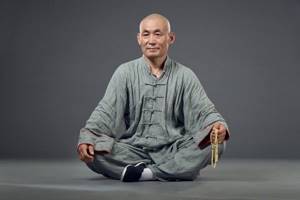
How to prepare for charging?
Before training, it is important to adhere to the following rules:
- Start with a warm-up, in the morning (preferably on an empty stomach). Walk around, rotate your body, joints, neck, knees and hands.
- Check your pulse. If it exceeds 130 beats/min, you should stop exercising and consult a specialist.
- Ventilate the room. It is better to go outside, into the forest for fresh air.
- After the exercise, rest thoroughly, listening to your body.
Contraindications for implementation
Qigong practice is not carried out in cases of severe physical conditions or diagnoses in patients:
- damage to the spinal column;
- infectious lesion of the musculoskeletal system;
- aortic aneurysm;
- cardiopathology (myocardial dystrophy, neuroinfection);
- internal bleeding;
- psychoses;
- feverish condition;
- chronic diseases with exacerbation.
Classes should be postponed if fatigue or severe hypothermia occurs. Also, you should not do it immediately after leaving the bathhouse or sauna.
How to do exercises correctly for older people?
- Exercise should be beneficial and enjoyable. You can't do it when you're tired. It is important to first relax and tune in.
- Inhalations should be calm, exhalations should be deep.
- Start by spending 20 minutes. Next, include consciousness in the process and visualize the energy moving in the body.
- Imagine how energy flows flow.
- Carry out the manipulations smoothly, monotonously, with half-closed eyes, pressing the tongue to the upper palate.
If sweating increases, then you need to moderate the pace and change wet clothes to dry ones.
The most famous Qigong exercises:
- Normalization of breathing.
- Movement of the ribs (spreading, sliding).
- Gradual swinging of the rainbow.
- Pull your shoulders back.
- Boating.
- Parting of clouds in the sky.
- Admiring the moon.
The peculiarity of Qigong practice is that it can be performed even by sedentary and bedridden patients to maintain motor activity. Although, of course, this is not a universal method. There are contraindications.




